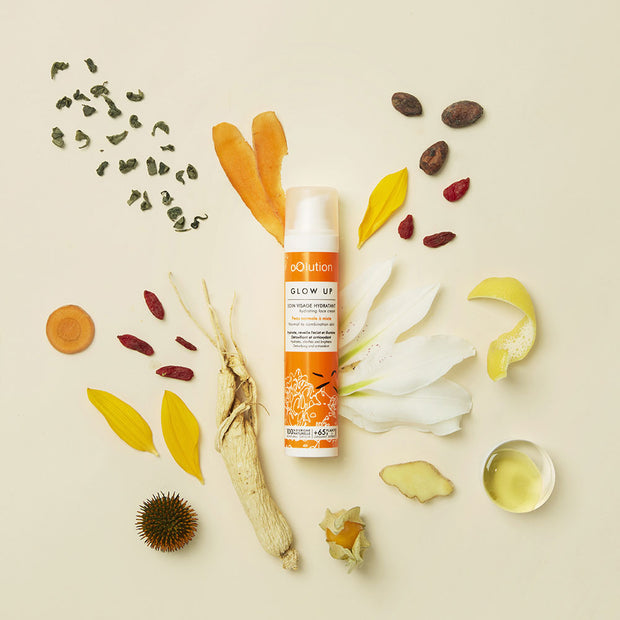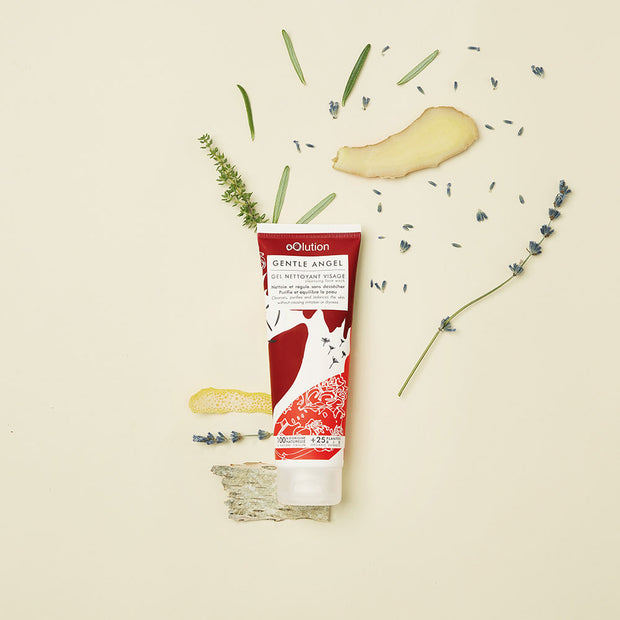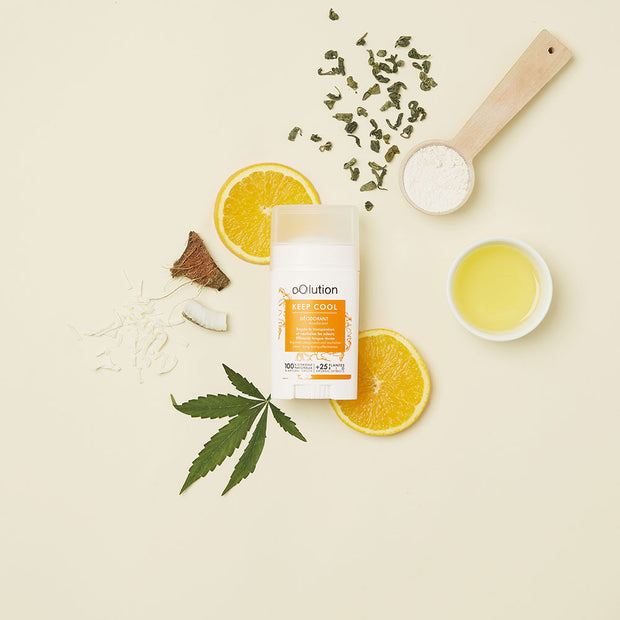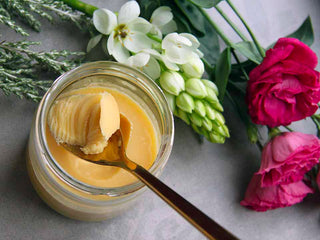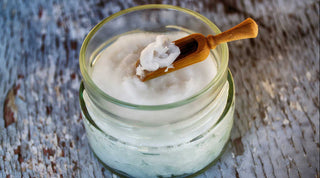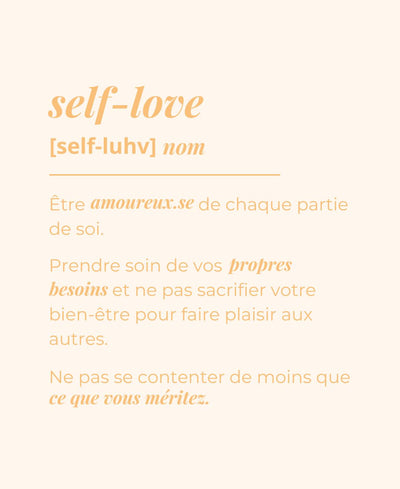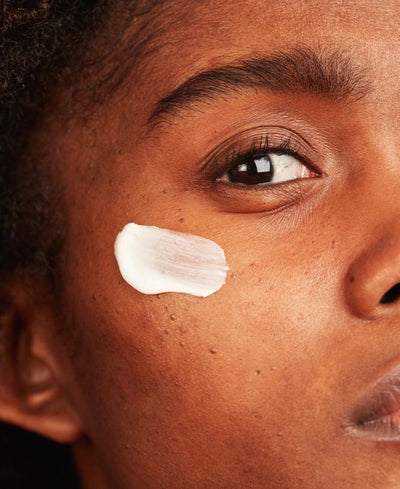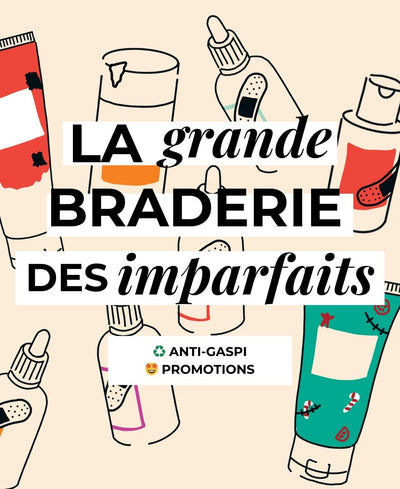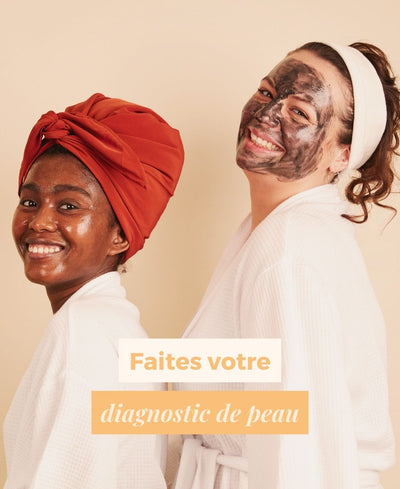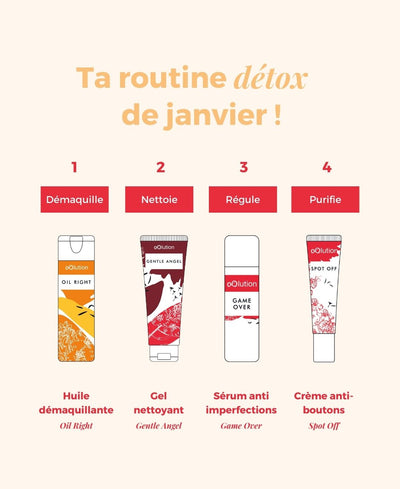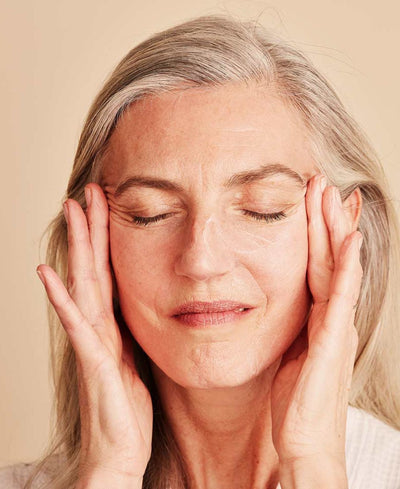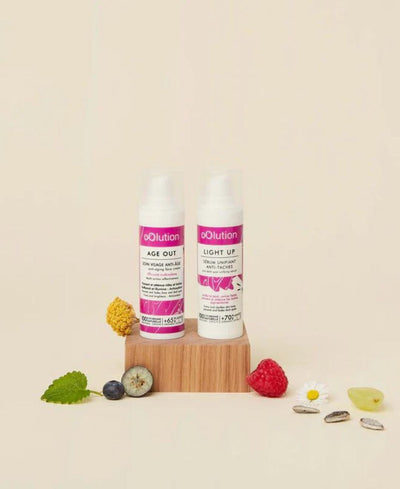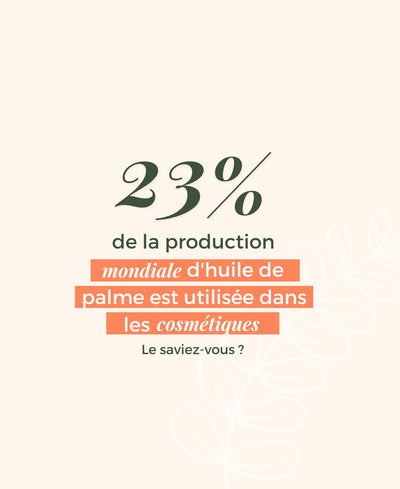Among the most widely used ingredients in cosmetics, shea butter is an undeniable star. But there are different levels of quality when it comes to shea butter... At oO, we've opted for top-quality, grand cru butter. This search led us to meet Carole Tawema, with whom we share the same demand for excellence in our ingredients.
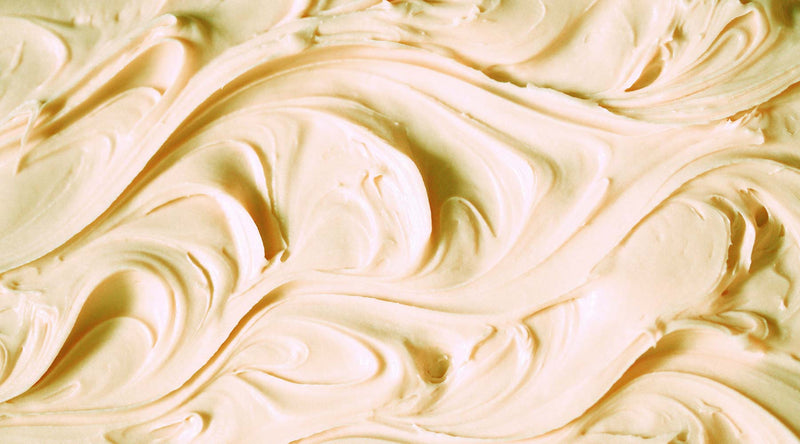
Shea butter: 20 years of pure and refined lies
Written on Oct.09.14 by juliette sarfati - Updated on 29.Aug.22
How to choose the right shea butter? Beware of impostures!
Carole Tawema, committed to high-quality shea butter for cosmetics
Highly committed to the fight against refined shea butter, this woman entrepreneur puts all her energy into denouncing this major problem. She proposes solutions that involve involving women producers on the ground in Africa, and raising the profile of raw, natural shea butter among the general public.
So we asked her to take part in an interview to shed some light on the ins and outs of this widespread problem.
Carole, can you introduce yourself and tell us about your career?
Born in Benin, I arrived in France at the age of 10. A baccalauréat ES and a HEC preparatory class later led me to the ESC Marseille business school, followed by a 4-year career as a consultant and project manager in the NTIC sector.
No connection with shea at first sight, except that in my final year of high school I had already defined that my personal and professional project would be to contribute to the development of the African continent.
I chose this topic for my business school dissertation, focusing on shea and women. At the time, I had no idea that this thesis would lead to the creation of KARETHIC.
Why did you decide to set up Terrethic, a company that supplies organic fair-trade shea butter?
Terrethic is Karethic's little French sister, born in Benin. It's the company that designs and distributes Karethic cosmetics and the Grand Cru shea butter from Benin used in them. My sister Glwadys and I grew up in contact with these women, guardians of the shea tree. Through Karethic, we aim to bring to light and recount in our own words, as women born on the African continent, the true story of shea, its true texture, color and everything that makes it an exceptional product, unfortunately reduced to a commodity by the agri-food and cosmetics industry.
Through the rehabilitation of the shea tree, we tell the story of the role played by African women in society. She is at the heart of Karethic. To do this, we had to delve into the little existing literature on this tree, and create a new way of working with women producers to enable them to express all their know-how and ingenuity. The fruit of this work, Grand Cru shea, was strangely little used in cosmetics. This led us to look for a new way of producing shea-based cosmetics, with new formulas designed by Laboratoire Savoir des Peuples and Caroline Rousseau.
We could have worked with a laboratory in Benin and had Karethic products manufactured in Benin or another African country, but it is currently much more complicated to develop natural formulas in Africa than in Europe. Formulas and raw materials are available, but quality packaging, production and processing tools are hard to find and prohibitively expensive. The absence of energy sources is also a handicap, as is women's lack of awareness of the presence of harmful products in the cosmetics on offer. From our childhood until this summer 2014, it's always hydroquinone-based lightening creams that are displayed in 4 by 3 on billboards or TV commercials in Benin. But when you discover the unique shea butter used by African women, you realize that using it in chemical and harmful cosmetics is a complete waste. A French laboratory, Savoir des Peuples, was the first to understand our approach, and was able to work on natural formulas that rediscover the sensoriality and unique character of shea. These formulas are now much appreciated by African women, but we regret having to make such a long journey for shea to get Karethic skincare products into their hands. Producing in Africa for African women using the formulas created by the savoir des peuples laboratory is a dream we'd like to realize one day.
How did you start working with Benin's community of women producers? And what was your philosophy?
My final year dissertation enabled me to understand the immense injustice done to the women who produce the shea butter at the heart of this industry. This injustice was all the more striking as it was particularly linked to their status as women in an initially matriarchal society, which became patriarchal during the colonial period to facilitate settlers' access to Africa's natural resources. To achieve our objectives, we had to put women back at the heart of this society and give them back their power.
Before tackling the question of shea quality, we took the time to understand the way in which they organized their days and the constraints involved, as well as the butter production process in each group of women producers, so as to identify the different methods and retain only one, the best, commonly accepted by all the women. We also needed to understand the relations between each village, which are not always cordial, the level of use of chemical inputs in the region and the women's knowledge on the subject, and the economic and social importance of shea. The place of production and the organization of the groups were determined on the basis of all these elements.
The quality of the butter is the result of shared knowledge between each group, who have been working together on the same production site for 5 years now, and of course the women's remuneration. It took 4 years of work. It's a long stage that manufacturers don't go through. Yet it's essential if we are to obtain shea of exceptional quality. When we think of the processing industry, we immediately think of machines, forgetting the men and women who make it all happen. And yet, unless we replace almond collectors with robots, it's impossible to produce even a single gram of shea without them.
What are the differences between refined and unrefined shea butter (in terms of skin benefits and ethics)?
It's easy to understand the difference between refined and unrefined virgin oils in food, and the importance of using unprocessed virgin oils as much as possible. This difference is less obvious in cosmetics, because we tend to forget that both skin and hair are living organs and the first line of defence against all external elements affecting the body (pollution, extreme climates...). Skin is like soil. It needs nourishment to be strong and regenerate naturally. These nutrients are mainly found in vegetable oils. The less these are processed, the better the nutrition.
Unrefined shea butter is natural shea butter. It is the richest active ingredient in the plant kingdom. It is pale yellow in color, has a melting texture and a gourmand scent when fresh and of high quality. The production of this shea requires real know-how and experience, which is overlooked by manufacturers. Refined shea is a by-product of natural shea: it comes from the need for manufacturers to eliminate undesirable components in poor-quality natural shea (color, odor, residues). The problem is thatafter refining, which is carried out at high temperatures and sometimes using carcinogenic solvents, the natural properties of shea are reduced by 50 to 80%, or even totally destroyed, depending on the refining process.
This is why the industry that consumes the most refined shea, and has done so for centuries, is the food industry. This industry is not interested in shea's active ingredients, but only in its stearic component, which makes it more heat-resistant than other vegetable oils. 20 years ago, cosmetics manufacturers found it easier and more convenient to use refined shea in their cosmetics formulations, while still selling the active ingredients. We are convinced that many cosmetics brands were unaware of this fact, but this ignorance is now leading to consumer deception.
Refining is useful for industrialists, especially multinationals that consume large volumes of shea. It can even be seen as a way of recycling poor-quality, badly produced or badly preserved shea. But it traps women producers in a vicious circle where the norm is low-quality shea, bought at low prices, from women who are kept in a position inferior to that of the "industrial magicians". These industrialists come to help them "improve" the quality of their shea by refining it and removing any trace indicating that their butter might be of poor quality. Moreover, it is these industrialists who set the quality criteria and the purchase price for shea kernels and butter. The quality criteria are known, but the purchase price remains taboo. And yet, production costs are easy to assess, and each country has a minimum income that determines the fair price at which shea kernels and butter should be traded. But most manufacturers believe that these women are incapable of producing anything of quality, and are content to buy shea kernels from them at a derisory price, and then process them into butter in their factories.
What are the problems caused by refined shea butter?
Refined shea butter is not a problem as such, apart from the fact that it is wrongly referred to as natural shea. It is the model on which it is based that generates environmental, socio-economic and cultural problems, which cannot be suspected until the shea industry as a whole is addressed.
From an environmental point of view, refining is an interesting solution for industrialists in the service of multinationals, but a polluting one. It's a step we can do without if we're concerned about the quality of the almonds and butter. But it comes at a price that manufacturers are not prepared to pay. What's more, some industry players are content to hoard as many shea kernels as possible, whatever their quality, convinced that refining will eliminate everything. This leads to over-exploitation of shea resources. Yet shea is a plant species that is useful for biodiversity, and is unfortunately on the verge of extinction. Since 2012, in response to the palm oil controversy, refined shea has become a "good alternative" for food manufacturers. Lobbyists are at work in Brussels to have it recognized as a healthier vegetable fat than palm oil by December 2014. The challenge for them now is to obtain it at the same price as palm oil, and thus increase volumes and productivity.
We already know the end of this story written by industrialists: it's the same as that of palm oil, with the exception that shea cannot be cultivated and is still unprotected. To compensate for this programmed over-exploitation, shea tree planting experiments are underway in Burkina Faso and Ghana, but who owns these trees? On what land are they planted? Who owns the land? Once the resources of the natural shea tree have been exhausted, what will be left for the women? To answer these questions, we came up with Plan B, which involves installing beehives to encourage both shea women and shea men to protect the natural shea trees, while earning extra income from beekeeping. This is what the Miel de fleur de karité project is all about.
On a socio-economic level, industrialists have taken advantage of the absence of protection for the shea tree and recognition of the profession of shea butter producers to establish their productivist processing standards and models, reducing women to the role of collectors. We have nothing against industry; it's essential to a country's development, and any technical progress in the shea industry is of interest to us as long as it doesn't endanger the environment or women's incomes. The question is: who owns the industrial tool, what needs does it meet, what is its impact on the environment and women's incomes, and where is the added value created? The aim of our approach is to return part of the processing activity to women shea producers, using ecological production tools adapted to their environment, so that they can capture a greater share of the added value created in this industry. This will take years of work, since these ecological processing methods, the result of women's experimental genius, are little known and little recognized. But the women we work with understand that this also means educating their children, especially their daughters. The extra income they earn from their processing activities is therefore used primarily to provide schooling for future generations. A generation in charge of recognizing and preserving the natural resources and knowledge of the African continent.
Culturally, refined shea is a "low-end" product of little interest to the consumer. The fact that it is presented as Africa's natural shea is a usurpation and destruction of an entire cultural heritage. Imagine for a moment that, for productivity reasons or out of simple ignorance, vinegar was presented as AOC wine throughout the world. This is what is currently happening with shea butter, except that the industry manages to erase all traces of fermentation or oxidation from this vinegar, refined shea butter, "thanks" to refining.
In the end, it's as if the story of shea began with the industrial era, whereas the story of shea is much older, more human and richer in the experimental genius of these women than what many cosmetics brands have been telling or repeating about shea and African women for the past few decades. It's time for this story to be known not just by Europeans, but by Africans themselves, who still attach little importance to the women who produce shea. There are several million of them throughout Africa, and given their crucial role in the industry, an International Shea Women's Day should be created, financed of course by the multinationals whose business depends directly on these women. But that may be asking too much. Better remuneration for women and recognition of their profession would already be a good start.
How can we tell the difference between shea butters when shopping, and what are the alternatives to refined shea butter?
There are no regulations to protect the consumer, as refined shea butter can claim to be "100% pure", "natural" or " organic". The only way to identify it is to open a jar and notice its color (white), its smell (none), its texture (hard, sometimes pasty and granular, depending on the refining process). In fact, this is what shea butter looks like when it has aged and no longer contains any of its natural active ingredients. In its pure state, natural shea is yellow in color, has a characteristic but gourmand odor, and melts at body temperature. Organic or non-organic refined shea is not harmful. It's just not shea.
To help consumers identify natural shea, we were forced to indicate "unrefined shea" on our packaging, but we did so reluctantly, because there's nothing finer than natural shea. In fact, it is fine by nature and requires no refining. To better reflect the exceptional character of fresh, high-quality natural shea, we now use the term "Grand Cru de karité", since this quality comes from a centuries-old tree, a terroir untouched by chemical inputs, and know-how handed down for centuries by the shea women.
_________________________________________________
Thanks a lot Carole!
At oO, we're very proud that our skincare products include "grand cru" shea butter, obtained with respect for the women who produce it and in line with our vision of ethics. It's to enable such projects to exist that we also finance women entrepreneurs around the world through micro-credit: natural ingredients of better quality, with real benefits and bought fairly.
The entire oOlution skincare range contains "grand cru" shea butter produced by Terrethic!
- Glow Up: moisturizing radiance and detox for normal to combination skin
- Whole Again: nourishing/protective care for very dry to fragile skin
- Check Matte: mattifying/regulating care for combination to oily skin
- Age Out: anti-aging and anti-wrinkles care for mature skin
- Eye Love: multi-action eye contour anti-dark shadows, puffiness and fine lines
- Loving Balm: nutri-repair balm for very dry to fragile skin
- Game Over: the balancing anti-imperfection serum for all skin types
- Light Up: the organic anti-spot unifying serum for mature skin
- Flower Power:organic facial water for all skin types
- Gentle Angel: organic face wash for all skin types, even sensitive skin
- Oil Right:organic and vegan make-up remover oil for all skin types
- Milky Way: organic cleansing milk for dry to sensitive skin
- Oil Lala: thesublimating face, body and hair oil for all skin types
- Happy Hands: the meltingcream for hands and nails
- Magic Milk: moisturizing body milk for normal skin
- Body Guard: cream nourishing body care for very dry to fragile skin
- Feet Good: cream comforting feet for very dry to fragile skin
- Keep Cool: the organic scented deodorant for all skin types
- Keep Cool: organic fragrance-free deodorant for sensitive skin
Recommended products
